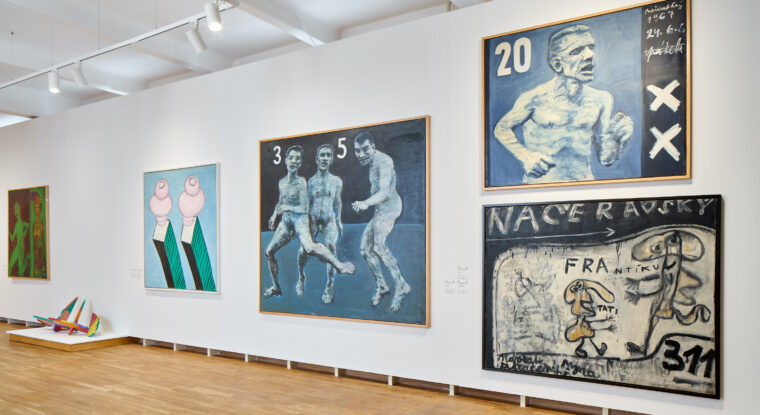
One of the ways in which members of modern society express themselves is by collecting fine art. The cosmos of their burgeoning collection conveys their passions, pursuits, and opinions on what is good, high-quality, meaningful and beautiful. We can think of collection-building as an open and dynamic process with an unknown endpoint, because as the collection grows, so does the collector’s knowledge and experience, and the future of the collection is slowly reshaped.
Detail
Exhibition Forgotten Masters. The Changing Nature of Artistic Success presents the works of ten painters who came last in a visitor poll held as part of the exhibition The Search for a Masterpiece (8 October 2023 –26 May 2024) and who have long been overlooked by art history. In recent decades, there have been very few, if any, exhibitions or monographs on them.
Detail
Trapped Emotions is an intergenerational artistic dialogue between two truly distinctive representatives of Czech art. The first, Luděk Rathouský, is an unwavering solitary force in Czech painting and a member of that generation of artists whose work at the start of the new millennium was shaped by conceptual thinking. The second, Zbyněk Sekal, is a painter, draughtsman and sculptor from the generation that evolved from the groundwork laid by Czech informel in the late 1950s and early 1960s.
Detail
The Black Cube, a space for exploring the moving image in works by selected artists, presents Static Drama by photographer and visual artist Alena Kotzmannová. The exhibition features works from the collections of the Gallery of Modern Art in Hradec Králové along with several of Kotzmannová’s other works.
Detail
The Cabinet of Curiosities section of the exhibition How to Collect Art: The Karel Tutsch Story introduces visitors to Karel Tutsch’s early collecting activities through a set of ex libris – a collection of small-scale applied graphic art. From here, Tutsch’s interests logically expanded to include fine art prints. Over time, the Cabinet of Curiosities will present various artists and their works on paper that form an indispensable part of the collection.
Detail
The concept of the historically focused collection exhibition How to Collect Art: the Karel Tutsch Story will be expanded by a series of exhibitions of the youngest generation of artists, current students or graduates from art school studios. In this way, the curators will revive Tutsch’s basic strategy of discovering and presenting the works of previously unknown artists in a new context. Gallery Na bidýlku II will thus become a laboratory for new approaches to the traditional medium of painting and installation, whose transformations Tutsch has followed and supported for several decades.
Detail
Jan Šerých produces a highly diverse body of work. A painter at first, he later – influenced by new media – began working with computers and the internet. Another integral aspect of his abstract and minimalist work is printing. Šerých works with found information that he pulls out of their timeless or virtual context – pictures, images from Google, information, data, symbols, codes and text. Many of these references have multiple meanings, and their meaning and humour deliberately produce a sense of disorientation in the viewer. When we look at Šerých’s works, we can usually decide whether we want to look at them or read them.
Detail
Ladislav Beneš (1883–1956) was one of the leading representatives of Czech neoclassicism in the first half of the 20th century. His works are a sophisticated synthesis of modernist and traditional elements. They reflect the fascination with speed, movement and technological progress that was typical for the interwar era. Automobiles, motorcycles and aeroplanes had become symbols of a new and dynamic world, and Beneš, as a member of the emerging generation of sculptors, was aware of these changes. Alongside his colleague Jan Štursa, with whom he shared a passion for the art of Auguste Rodin, he went in search of a new artistic style centred around the human figure that would also reflect this fascination with movement.
Detail